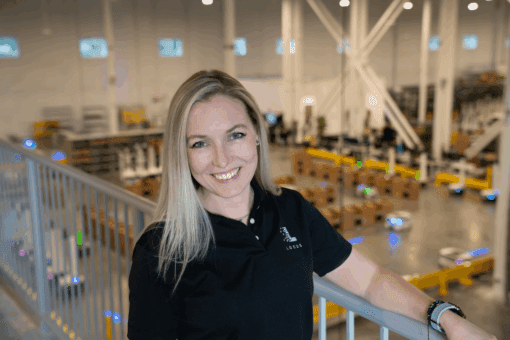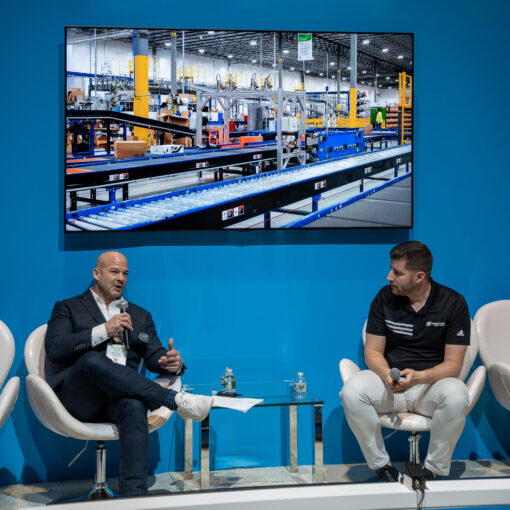WP: How to achieve 400 UPH with Locus Fast Pick
WP: How to achieve 400 UPH with Locus Fast Pick Download Now!
Understanding Opportunity Cost in Warehouse Automation Decisions
Kane Edwards, Business Development Manager

Every business decision comes with trade-offs and choosing one path means forgoing another. These trade-offs lead to what economists call "opportunity cost", which is the potential benefits that are lost when selecting one alternative over another.
In the context of warehouse operations, this principle applies directly to warehouse automation. Decision-makers often weigh the upfront costs of implementing automation against projected returns. But what about the cost of not automating? The opportunity cost of maintaining manual processes can be just as impactful as the investment in automation itself.
What is Opportunity Cost?
At its core, opportunity cost is calculated using a simple formula:
Opportunity Cost = Return of Best Option - Return of Chosen Option
While this formula appears straightforward, the real challenge lies in quantifying those values. In fulfillment operations, the cost of automation is often easy to measure by looking at capital expenses, implementation costs, and anticipated savings. But the cost of not automating is less tangible, making it easy to overlook. That doesn’t mean it’s not important.
Weighing the Benefits of Warehouse Automation
When evaluating the return on warehouse automation, companies tend to focus on three primary benefits:
- Operational Cost Savings
- Reduced direct labor costs: Automation helps offset the rising costs of overtime and premium pay for night and weekend shifts for full-time employees.
- Lower indirect labor costs: Automation reduces expenses related to hiring, training, administrative work, and even insurance costs.
- Fewer equipment and licensing expenses: Warehouses can cut back on purchasing and maintaining RF scanners, carts, and other material-handling tools.
- Performance Gains
- Fewer missed service-level agreements (SLAs): Meeting SLAs consistently is easier with automation-enhanced efficiency.
- Less stock damage: Automated systems reduce human handling errors, leading to fewer damaged goods.
- More accurate order fulfillment: Robots and automated systems help minimize picking mistakes, improving accuracy and reducing returns.
- Revenue Growth
- Higher throughput: Automated operations allow fulfillment centers to handle more orders per day without increasing headcount.
- More competitive offerings: Customers are increasingly looking for automated fulfillment partners that can promise speed and accuracy.
- Expanded value-added services: With automation streamlining core processes, companies can introduce new services such as on-demand kitting, custom packaging, or enhanced tracking and reporting.
While these benefits are well-documented, the discussion often stops here. However, to make a truly informed decision, businesses must also ask: What is the cost of not automating?
The Hidden Costs of Not Automating
In today’s competitive environment, where distribution centers are vying for space, talent, and customers, the question should be asked: What is the cost of not automating? As competition intensifies and supply chain complexities grow, failing to automate can lead to five key disadvantages:
- Space Constraints
Real estate prices and energy costs are rising, making space a precious resource. Automated solutions can optimize storage density for unmatched flexibility, allowing warehouses to fulfill more orders without expanding their footprint. Without automation, businesses may need to lease or purchase additional space just to maintain output, increasing overhead costs significantly.
- Labor Challenges
The warehouse labor shortage isn’t going away. Skilled workers are harder to find, and employee expectations around working conditions continue to evolve. Warehouses that integrate automation provide a more structured and efficient work environment, making it easier to attract and retain employees. Businesses that delay automation may struggle to hire and keep workers, leading to increased turnover, higher overtime costs, and lower morale.
- Customer Expectations
In today’s fulfillment landscape, speed and accuracy are critical. Competitors using automation can offer same- or next-day shipping, minimize stockouts, and provide precise order fulfillment, which helps to win and retain customers. Businesses that stick with fully manual processes risk falling behind, as customers migrate to competitors with superior performance.
- Future-Proofing Risks
Even if automation isn’t an immediate necessity, planning for it is crucial. Warehouse infrastructure decisions, such as layout redesigns, software upgrades, or facility expansions, should take future automation into account. Ignoring automation now may result in expensive retrofitting later, adding unnecessary costs and disruptions.
- Flexibility Limitations
Warehouse operations face unpredictable demand spikes and changing order volumes. Without the unmatched flexibility of warehouse automation, warehouses may struggle to adapt quickly and efficiently to changes in market conditions or customer needs. Automation provides the flexibility to scale operations up or down seamlessly, ensuring that warehouses can respond to demand variability without overcommitting resources or missing opportunities.
Taking a Holistic Approach to Opportunity Cost
A company may initially determine that automation isn’t cost-effective based on a simple ROI analysis. However, this view often ignores the broader opportunity costs. When factoring in the costs of inaction, including real estate expansion, labor shortages, lost customers, flexibility, and future-proofing expenses, the scales may tip in favor of automation.
Ultimately, making the right decision requires looking beyond just direct investment and returns. It demands a comprehensive assessment of what’s gained and what’s lost by choosing to automate or not.
Next Steps: Finding the Right Warehouse Automation Solution
If the numbers indicate that warehouse automation is the right move, the next step is determining which solution best fits your operation. In my next blog post, I’ll explore key factors in selecting the right automation technology to maximize efficiency and scalability.
Stay tuned.
BIO:
Kane Edwards is Locus Robotics’ business development manager. With a background in materials handling and automation, he has supported many warehouse operations globally in delivering flexible autonomous intralogistics solutions which solve the most pressing warehousing challenges of today.
Edwards has a BA (Hons) degree in Business and Enterprise Management from Sheffield Hallam University, and over five years of experience in the materials handling, robotics and automation sectors. He is passionate about finding solutions that overcome the challenges faced in today’s intralogistics industry and keeping up with the latest demands and trends to ensure customers always have access to the innovations required to stay competitive.




